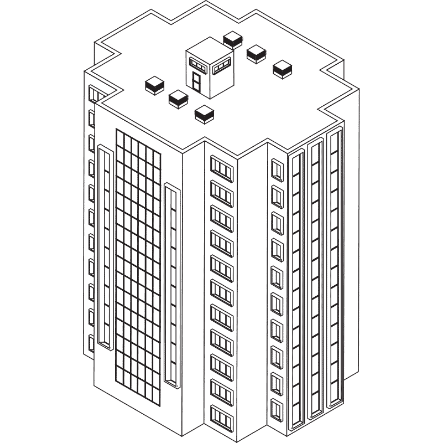
You may wonder, what is the source of all this indoor air pollution? From dust particulates to cooking emissions to CO₂ generated simply by breathing, a wide range of contaminants build up inside without adequate ventilation. Buildings need high-functioning HVAC systems that can bring in fresh air and filter contaminants, yet too many of our schools, homes and workplaces are ill-equipped to do this job properly. In fact, an estimated 41% of school districts need to update or replace HVAC systems in at least half of their schools, according to a study by the U.S. Government Accountability Office.2
"Buildings need high-functioning HVAC systems that can frequently bring in fresh air and filter contaminants, yet too many of our schools, homes and workplaces are ill-equipped to do this job properly."

To help reduce the spread of pathogens in schools and office buildings, the U.S. Environmental Protection Agency states that indoor relative humidity should be between 30% and 50% – any higher or lower, and it may negatively impact the air quality in our buildings.3 The relative humidity is important because it plays a direct role in how long exhaled human droplets stay in the air, and how far they can spread.4 The more humidity in the air, the shorter distances pathogens tend to travel, yet too much humidity and mold can grow. Finding the right balance takes a certified professional.
When we work, learn and live in poorly ventilated spaces, our health suffers. The COVID-19 pandemic put a spotlight on the spread of airborne illness, but everyday indoor air pollutants make us sick, too. Allergens like pet dander, or chemicals from cleaning products, or even high concentrations of CO₂ can provoke symptoms such as headaches, fatigue, coughing, nausea, skin irritation and more. Studies show that unhealthy indoor air quality can even negatively impact the cognitive function of students and office workers.5
Find an HVAC Professional
It takes a highly trained HVAC professional to conduct a Ventilation Verification, test and balance an HVAC system, or repair and replace it. If you care about the air you and your tenants breathe, your search for cleaner air starts here.



